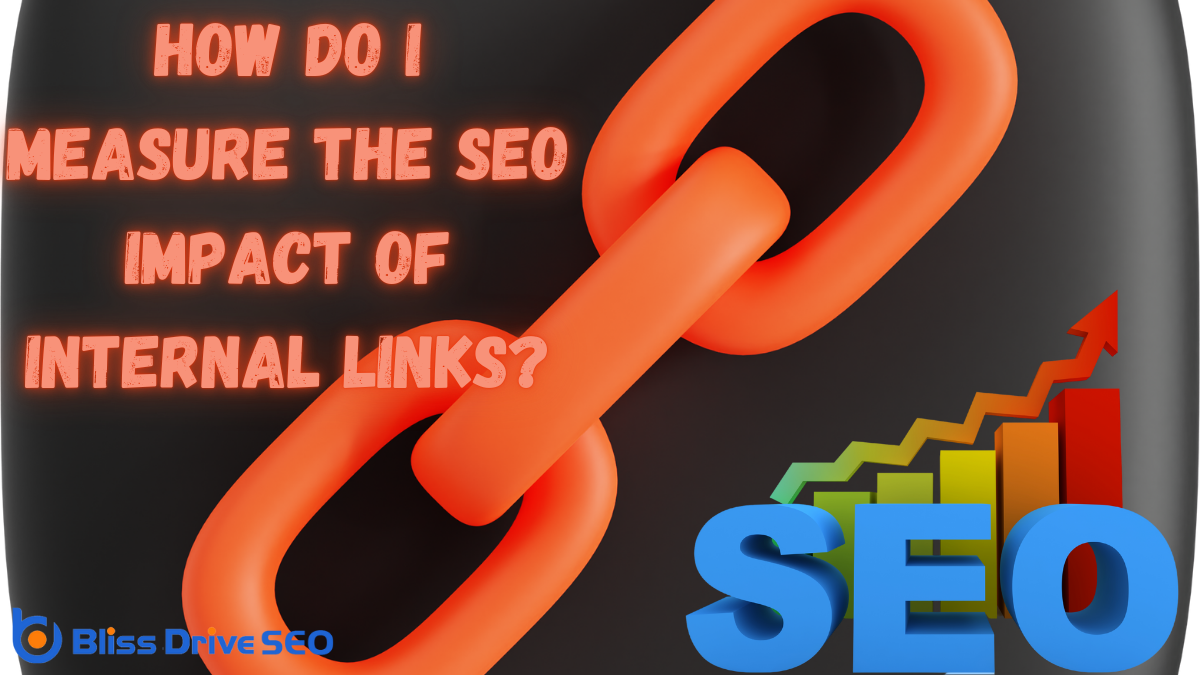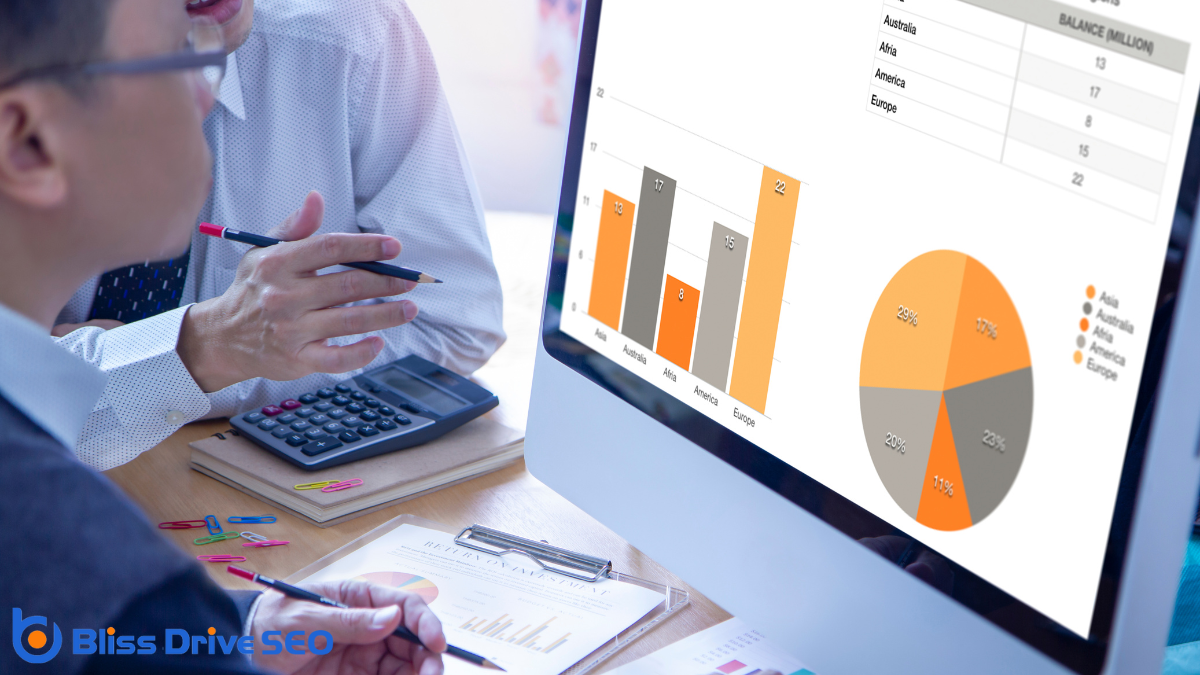Digital Marketing Services
Learn More About Us

To measure the SEO impact of internal links, start by examining your site's organic trafficVisitors who come to a website through unpaid search engine results. levels using tools like Google AnalyticsA web analytics service offered by Google that tracks and reports website traffic. to establish a baseline. Focus on user behavior metrics such as click-through rates and conversionThe completion of a desired action by a referred user, such as making a purchase or filling out a fo... rates to gauge engagementThe interactions that users have with a brand’s content on social media. with these links. Don't forget to check link equity and PageRank flow with Google Search ConsoleA tool by Google that helps monitor and maintain your site's presence in search results.. The key is to continuously refine your strategy based on trends and algorithm updates—there's more to explore.
Internal links play an essential role in SEO by helping search engines understand the structure and hierarchy of your website. When you strategically link pages, you guide search engines and users through your content, showing which pages are most important.
This improves the user experience as visitors can easily find related information, keeping them engaged longer. Internal links also distribute page authority across your site, potentially boosting the SEO value of less visible pages.
By linking relevant content, you guarantee that search engines crawl and index your pages efficiently. Remember, the anchor textThe clickable text in a hyperlink, important for SEO as it provides context for the linked page. you use in these links is vital; it provides context about the linked page's content.

To improve your website's SEO, you need to focus on how efficiently search engines crawl and index your pages.
Analyze the factors impacting crawlingThe process by which search engines discover new and updated web pages to index. efficiency, like URL structure and server response times, to guarantee your site is fully accessible.
Then, check your indexation rate to see if all your important pages are appearing in search results.
While often overlooked, the efficiency of your website's crawling and indexation can greatly affect its SEO performance. Search engines need to access and understand your pages quickly, so optimizing crawlability is essential.
Start by ensuring your site's internal links are logical and well-structured, guiding crawlers efficiently. Use a clear hierarchy and avoid broken links, which can hinder crawl paths. Make sure your robots.txtA file that tells search engine crawlers which pages or files they can or cannot request from your s... file isn't blocking important pages.
Additionally, review your XML sitemap for accuracy, ensuring it includes all key pages. Regularly monitor your server's response times; slow responses can waste crawl budget.
Use tools like Google Search Console to identify crawl errors or issues. By fine-tuning these aspects, you'll improve the chances of search engines indexingThe process of adding web pages into a search engine's database. your content effectively.
Optimizing crawlability lays a strong foundation, but understanding your site's indexation rate offers insights into how efficiently search engines process your content.
You'll want to guarantee that all valuable pages are indexed. Start by checking your indexation rate in Google Search Console. This reveals which pages are indexed and highlights any issues with those that aren't.
To improve, consider:
Understanding how internal links distribute page authority across your website is essential for maximizing SEO impact.
Page authority indicates a page's potential to rank in search results. By strategically linking high-authority pages to those with lower authority, you can boost the latter's visibility.
Evaluate your site's page authority distribution by using tools like Moz's Domain Authority or Ahrefs' URL Rating. These tools help identify which pages hold more authority and which need a lift.
Focus on creating a balanced authority flow across your site. Avoid concentrating authority on a few pages, as this can leave other valuable content underperforming.
Regularly review and adjust your internal linking strategy to guarantee peak authority distribution and improve overall SEO performance.
Building on the foundation of a well-distributed page authority, tracking user engagementThe level of interaction and involvement users have with social media content. and behavior becomes an essential component in optimizing your site's SEO strategy.
You'll want to understand how visitors interact with your internal links and the content they leadA potential customer referred by an affiliate who has shown interest in the product or service but h... to. By monitoring these interactions, you can refine your approach to maximize user satisfaction and search engine visibility.
Consider focusing on:

To boost your internal linking strategy, use tools to analyze your site's link structure and uncover potential content gaps.
These tools can help you evaluate how well your current links are performing, allowing you to make informed decisions on where to add or adjust links.
While delving into the complexities of SEO, analyzing your site's link structure can reveal untapped opportunities for improvement. By using specialized tools, you can identify patterns and connections within your internal links that mightn't be immediately obvious.
These tools help you visualize your site's architecture, guaranteeing that every page is effectively linked to maximize SEO potential.
Consider focusing on:
Utilizing these insights can greatly strengthen your site's internal linking strategy.
After analyzing your site's link structure, it's equally important to uncover content gaps that may hinder your SEO efforts. By identifying these gaps, you can find opportunities to create new content and enhance internal linking strategies.
Use SEO tools like Ahrefs, SEMrush, or Moz to detect missing links in your content that competitors might already have. These tools provide insights into keywordsWords or phrases that users type into search engines to find information. you're not targeting, allowing you to develop content that fills those gaps.
Look for topics with high search volume but low competition; they're golden opportunities for boosting your site's visibility. By strategically adding content and linking it internally, you'll strengthen your site's authority and improve user experience, ultimately driving better search engine rankingsThe position at which a website appears in the SERP. and increased traffic.
Many overlook the power of evaluating link performance when optimizing a website's SEO strategy. By analyzing how your internal links perform, you can uncover new opportunities for improvement.
Use tools like Google Analytics or Ahrefs to track which links drive the most traffic and engagement. You'll gain insights into which pages need more attention and how to better distribute link equity across your site.
Consider these key metrics to focus on:
Evaluating these factors helps refine your approach and boost overall SEO performance.
To effectively monitor changes in organic traffic resulting from internal links, it's crucial to establish a baseline. Start by recording your current organic traffic levels for the pages you're linking internally. Use tools like Google Analytics to gather this data over a set period, making sure you capture a reliable average.
Once you've got a baseline, regularly check your analytics to spot any fluctuations in organic traffic. Look for patterns that arise after you've implemented new internal links.
If you notice an increase in traffic to linked pages, it could be a sign of successful internal linking. However, be mindful of other factors that might influence traffic changes, such as algorithm updatesChanges made by search engines to their ranking algorithms. or seasonal trends, to make certain you're attributing changes accurately to your internal linking strategy.
How can you determine if your internal links are boosting conversion rates? Start by analyzing user behavior.
Look at metrics that show how users interact with your site after clicking on an internal link. This will help you understand if these links lead to desired actions.
Consider the following:
These steps provide a clear picture of conversion improvements.

While internal links are essential for website navigation and user experience, they also play a significant role in distributing link equity and influencing PageRank flow.
To measure this, you'll want to focus on how effectively your internal links pass authority from one page to another. Start by using tools like Google Search Console or third-party SEO software to analyze your website's link profile.
Look for metrics such as Page Authority (PA)A score developed by Moz that predicts how well a specific page will rank on SERPs. and Domain Authority (DA)A score developed by Moz that predicts how well a website will rank on SERPs. to assess how well your internal links distribute equity. Pay attention to pages with high PA, as these can boost other pages they link to.
Make certain your important content receives enough link equity to rank well, and adjust your linking strategy accordingly to optimize PageRank flow.
When you're looking to optimize your internal link structure, implementing A/B testing can be invaluable. It allows you to compare different link strategies and determine which one enhances user engagement and SEO performance.
Start by setting up two versions of a page with distinct internal link arrangements. Analyze the results to see which version boosts metrics like page views or conversion rates.
Here are some steps to guide your testing:
This approach provides clear insights into the effectiveness of your internal links.
To measure the SEO impact of internal links effectively, you'll need to harness a combination of analytics toolsSoftware used to track and analyze website performance, user behavior, and marketing efforts. and strategic testing. Focus on understanding crawlability, page authority, and user engagement. Use tools like Google Analytics and Search Console to track changes in organic traffic and conversion rates. Don't forget A/B testing to refine your link structures. By continuously analyzing these metrics, you'll enhance your site's SEO performance and adapt to any algorithm updates.
